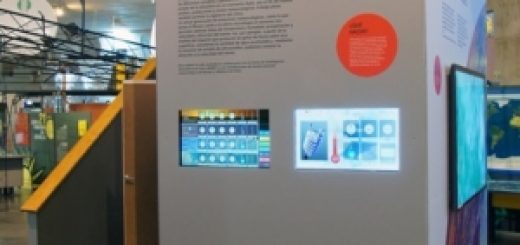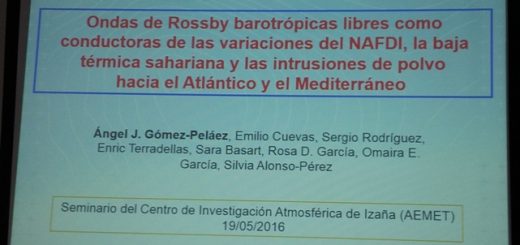Publication of the paper “Rapid changes of dust geochemistry in the Saharan Air Layer linked to sources and meteorology”
The journal Atmospheric Environment has published a new study, entitled “Rapid changes of dust geochemistry in the Saharan Air Layer linked to sources and meteorology”, based on measurements performed at Izaña Observatory.
The study was performed by a team of scientist from the Izaña Atmospehric Research Centre, the National Spanish Research Council CSIC, the National Institute of Nuclear Physics of Italy, the University of La Laguna and the European University of the Canaries.
In this study we performed 1-hour resolution measurements of elemental composition of dust into the Saharan Air Layer. We observed rapid variations of dust composition (ratios of elemental composition of dust to aluminium); some elemental ratios changed by a factor 2 in a few (5–8) hours. This variability was induced by the meteorologically modulated, alternating impacts of three of the large North African dust sources: NE Algeria (rich in evaporite minerals bearing Ca, S, Sr, K and Mg and in illite mineral), Western Sahara to Bechar region (containing Na, S and Cl rich Yermosol soils) and SW Sahara – Western Sahel (rich in illite and hematite).
We traced the changes in large-scale meteorology by using the so-called North African Dipole Intensity (NAFDI), i.e. strength of the subtropical North African High, at Morocco, to the monsoon tropical low at Nigeria. The change of phase of NAFDI, from negative to positive, is associated with a westward propagating Harmattan pulses, the associated westward shifts of the Saharan Heat Low and convection, including processes embedded within the monsoon inflow. This resulted in the alternated activation and export of dust from the different sources and in a correlation between NAFDI and dust composition was found. Moderate values of NAFDI (0 to +2.5) are associated with Ca, K, Na, Mg and S rich dust (linked to Northern Sahara sources) in the Atlantic SAL, higher NAFDI values (+2.5 to +4) are associated with Fe rich dust in the SAL (linked to Southern Sahara), whereas negative values of NAFDI promoted (Ca, K, Na, Mg and S rich) dust export to the Mediterranean (Figure 1).
This study also shows that trace metals (Br, Cr, Ni, Zn and Zr) of industrial emissions in North Africa are transported with dust in the Saharan Air Layer.

Figure 1: NAFDI phase and elemental ratios associated with different dust sources.
For more details about this work please refer to:
Rodríguez, S., Calzolai, G., Chiari, M., Nava, S., García, M.I., Lopez-Solano, J., Marrero, C., Lopez-Darias, J., Cuevas, E., Alonso-Perez, S., Prats, N., Amato, F., Lucarelli, F., Querol, X., Rapid changes of dust geochemistry in the Saharan Air Layer linked to sources and meteorology. Atmospheric Environment 2020, in press https://doi.org/10.1016/j.atmosenv.2019.117186
The paper can be read from: https://doi.org/10.1016/j.atmosenv.2019.117186







